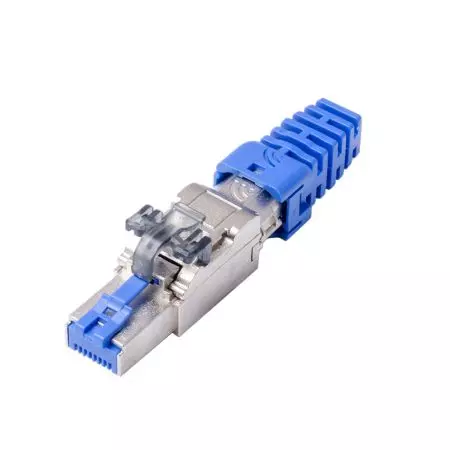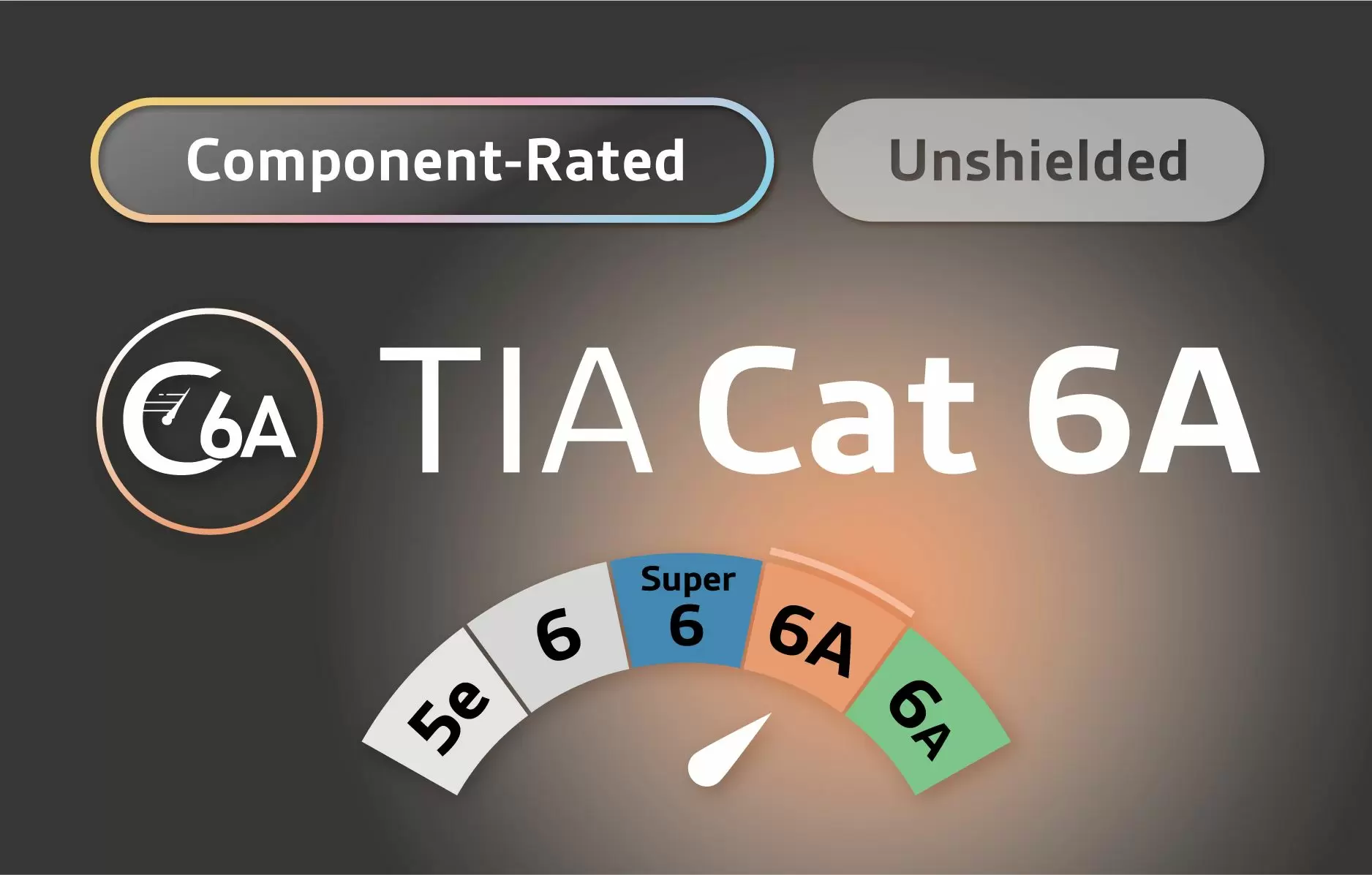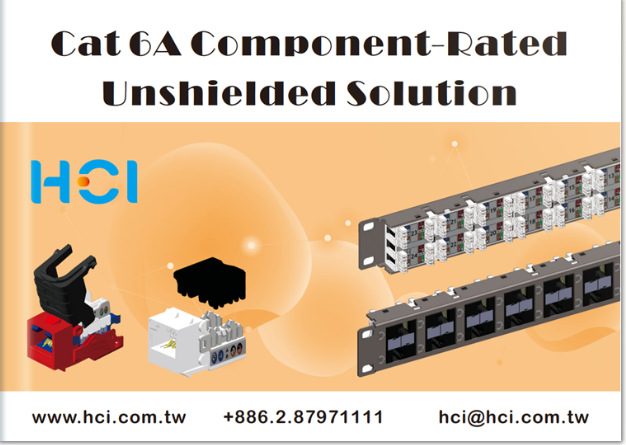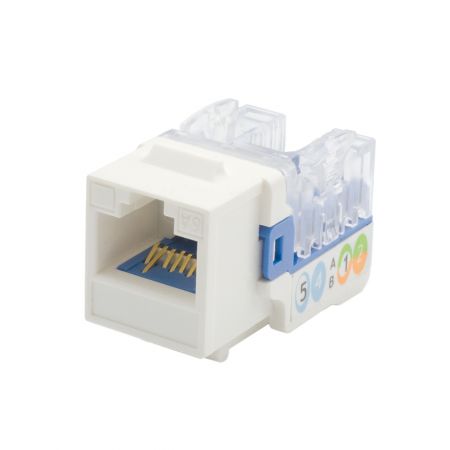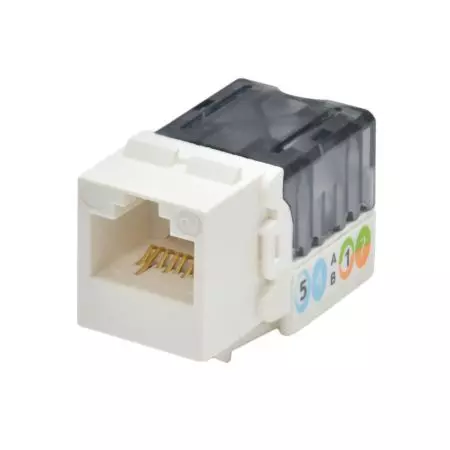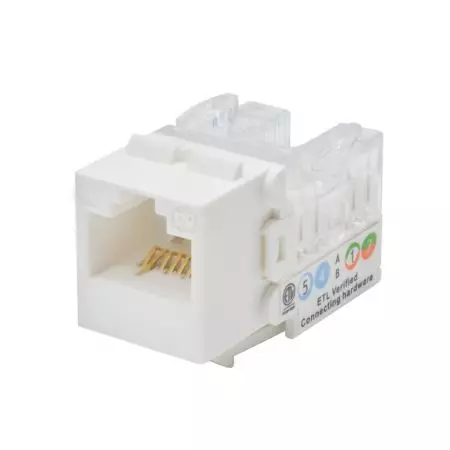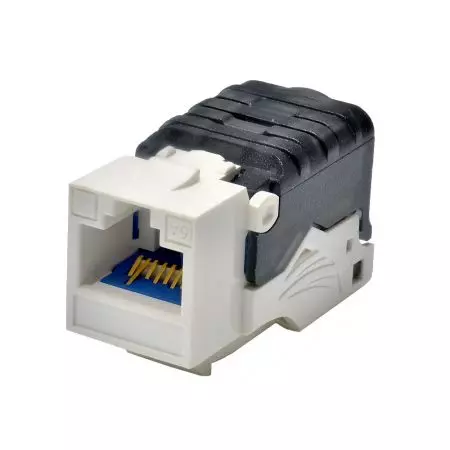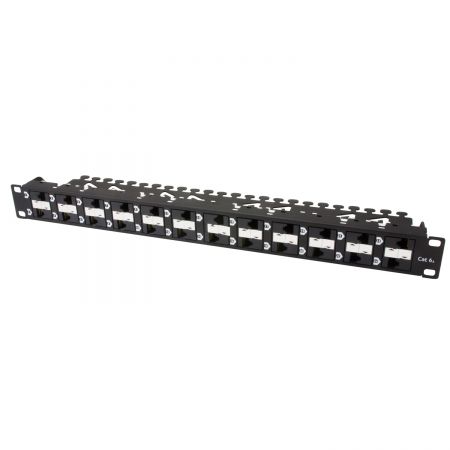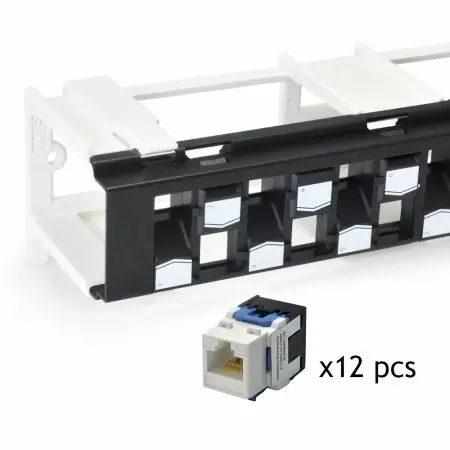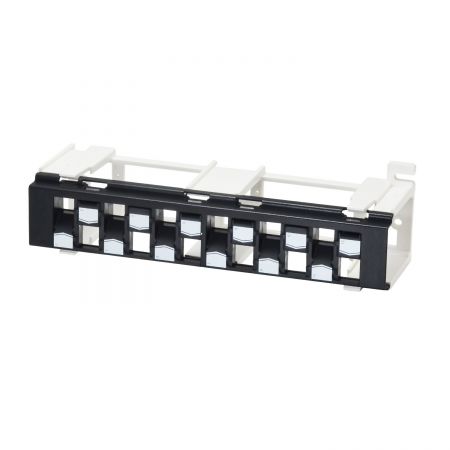UTP - TIA Cat 6A Component-Rated
Unshielded
Reduced budget and lower labor costs
Reduced Budget - The Unshielded System has traditionally been widely adopted and continues to dominate the current market share. Compared to Shielded Systems, Unshielded Systems often have significantly lower costs in terms of the entire physical layer expenses. No explanation is needed as it is widely known that Shielded materials typically come at a higher cost compared to Unshielded ones.
Lower Labor Costs - Cat 6A Unshielded Systems can significantly reduce labor costs as well. By eliminating the time-consuming grounding process, the installation time can be reduced by nearly half, resulting in substantial savings in labor hours.
It is important to highlight that different brands of jacks and panels have their own specific grounding procedures. Installers are obligated to diligently adhere to the provided grounding instructions for each component in order to mitigate external electromagnetic radiation effectively. 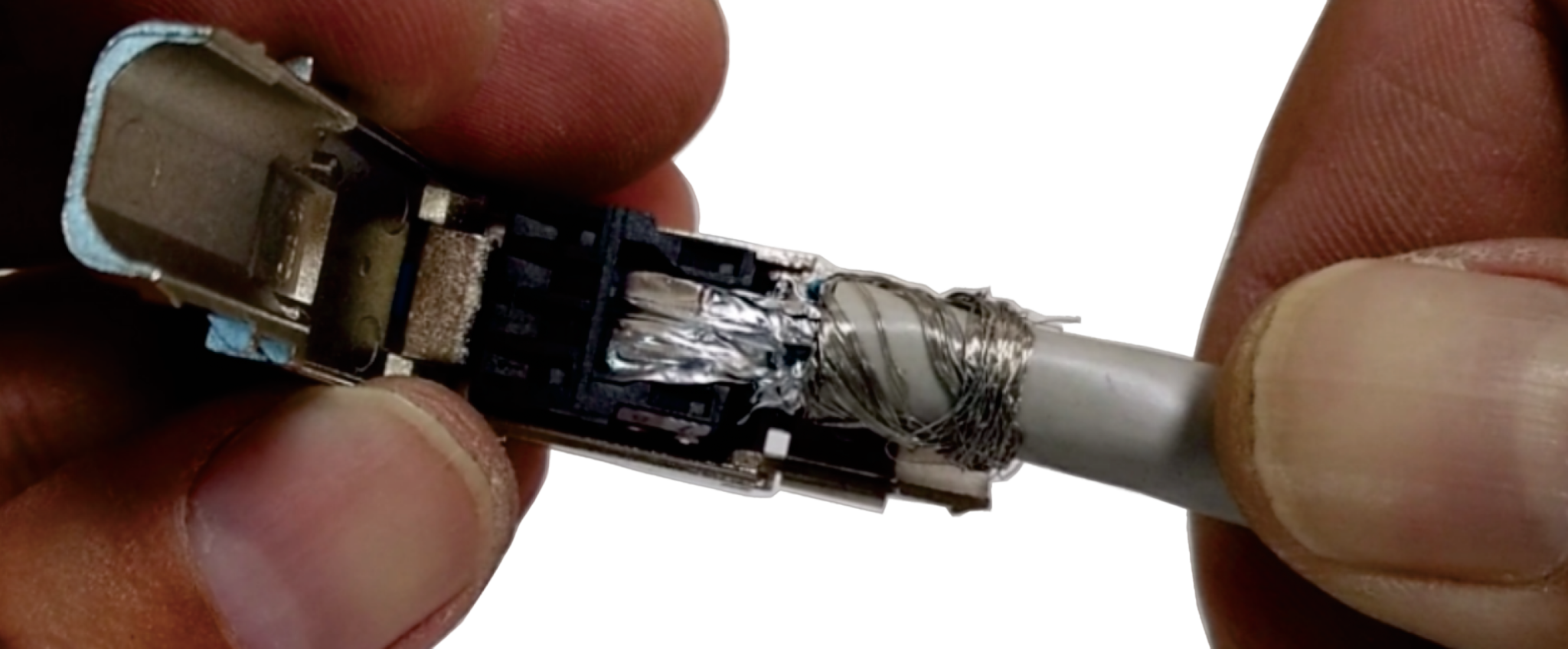
However, as is often the reality, things don't always unfold as anticipated. Any oversight or careless workmanship during the grounding process can lead to improper grounding, inadvertently creating an antenna-like structure. It would simultaneously unbalance the voltage level on each pair and further couple a lot of noises unexpectedly.
Typically, these issues remain undetected until the acceptance testing phase, which is the final stage of the installation. This discovery often triggers a time-consuming troubleshooting process and requires significant rework. Consequently, valuable time and money end up being wasted in the process.
Wouldn't it be preferable to utilize Unshielded Cat 6A, which can fulfill the job requirements as recommended by standards, instead of opting for the relatively expensive and intricate Shielded Cat 6A?
Near End Crosstalk Performance is ensured
After encountering numerous unsatisfactory performance issues during on-site jobs, people have gained awareness of the superiority of Cat 6A Component-Rated jacks over Cat 6A Channel-Compliant jacks. It is evident that the criteria for Component-Rated jacks are significantly more stringent than those for Permanent Link or Channel specifications. The graph presented here provides a clear depiction of the disparity in requirements for acceptable Cat 6A mated coupling across the entire frequency range up to 500MHz.
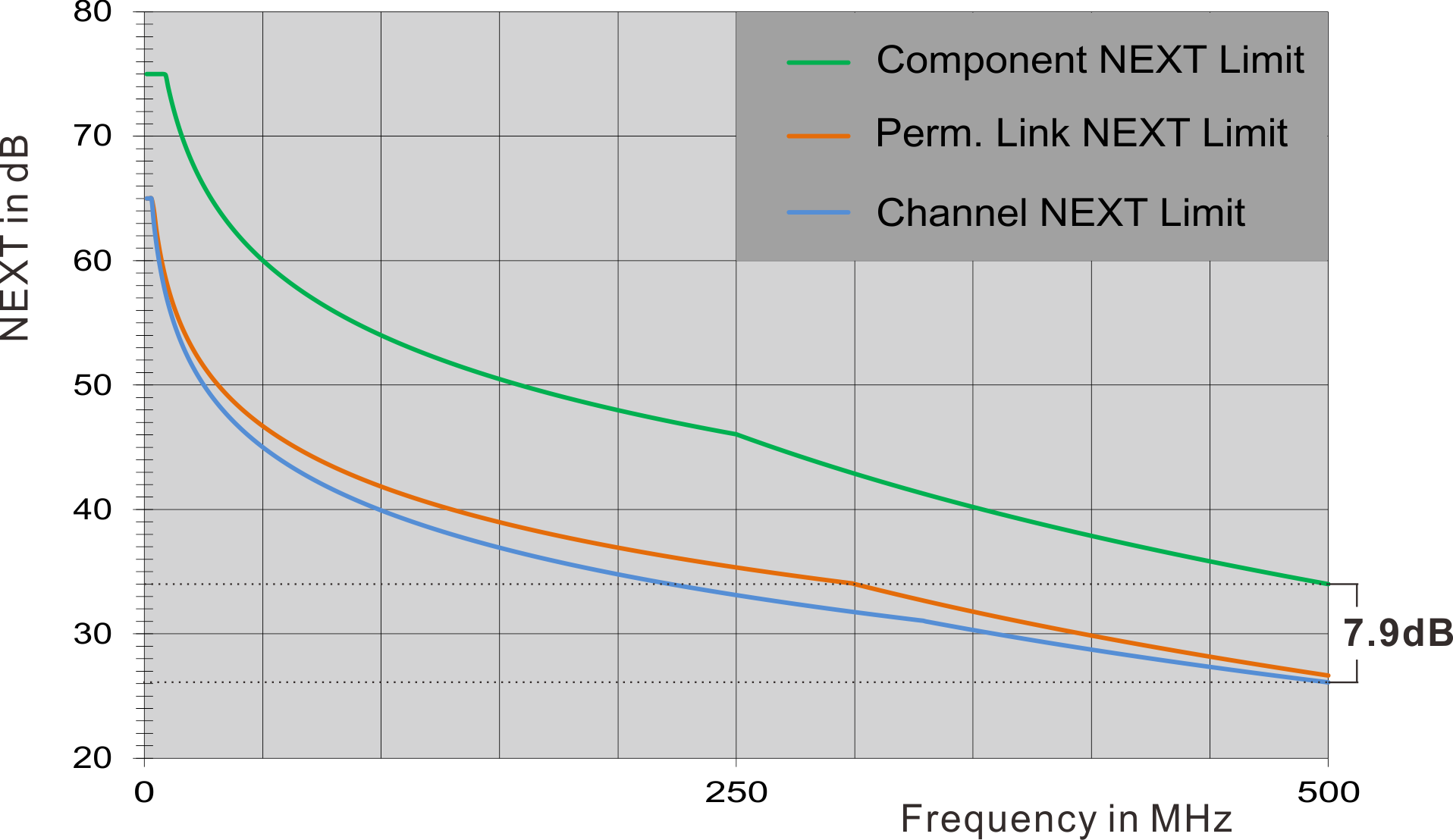
To illustrate the point, let's consider the Cat 6A NEXT limit at 500MHz as an example. The requirement for Component-Rated jacks is 34dB, whereas for Channel-Compliant jacks, it is 26.1dB. The nearly 8dB difference at 500MHz is not merely a result of accommodating multiple connections but rather an indication of the need for stricter regulations regarding Component-Rated performance.
Given the proximity of Component-Rated performance, why settle for "Cat 6A Channel-Compliant" when the superior option of "Cat 6A Component-Rated" is readily available?
Alien Crosstalk is effectively mitigated
Eliminating the grounding process does not imply that you should lower your standards or requirements. In the case of Cat 6A, where 10-gigabit signals traverse frequencies of up to 500MHz, the increased bandwidth makes Alien Crosstalk (AXT) a significant source of noise that can degrade network performance, for example, causing a drop from 10G to 1G speeds.

In cases where a speed downgrade occurs, technicians often rely on handheld testers to assess the quality of the cabling. Surprisingly, the Cat 6A Permanent Link or Channel might still pass the test. This situation raises the question: What could be the underlying problem causing the speed reduction? The root cause is often attributed to the neglect of Alien Crosstalk (AXT) mitigation.
It is important to understand that neither connectivity itself nor the chipsets on networking equipment can effectively compensate for Alien Crosstalk (AXT). As the running bandwidth reaches up to 500MHz, the presence of unwanted signals coupled externally from neighboring ports becomes increasingly significant. Ignoring AXT can have detrimental effects, including worsening the bit error rate and leading to network downtime.
The performance of Alien Crosstalk is greatly influenced by the physical distance between ports. This encompasses preventing power-sum emission/coupling from each twisted pair within bundled cables across the entire length of the run. Additionally, it involves mitigating the impact of short-run patch cords (less than 10 meters) and terminated connectors (jacks or panels) in the mounting fixtures.

We conducted tests on several self-proclaimed Cat 6A patch panels and keystone jacks available in the market. All of them underwent measurements using Permanent Link and Channel tests. In the majority of cases, when the configuration adhered to standards and the wire-termination was correctly performed, we obtained a PASS result. The headroom may vary depending on the severity of the connection setup, but basically they are all within the acceptable margin.
However, this only accomplishes half of a successful cabling solution. The other half has to be done with Alien Crosstalk verification. It is noteworthy that approximately half of the tested samples encountered difficulties in meeting the power-sum Alien Near End Crosstalk limits. Below is a typical example of a self-proclaimed Cat 6A patch panel that satisfies the Cat 6A internal NEXT requirement but falls significantly short of meeting the Power-Sum Alien Near End Crosstalk (PSANEXT) requirement: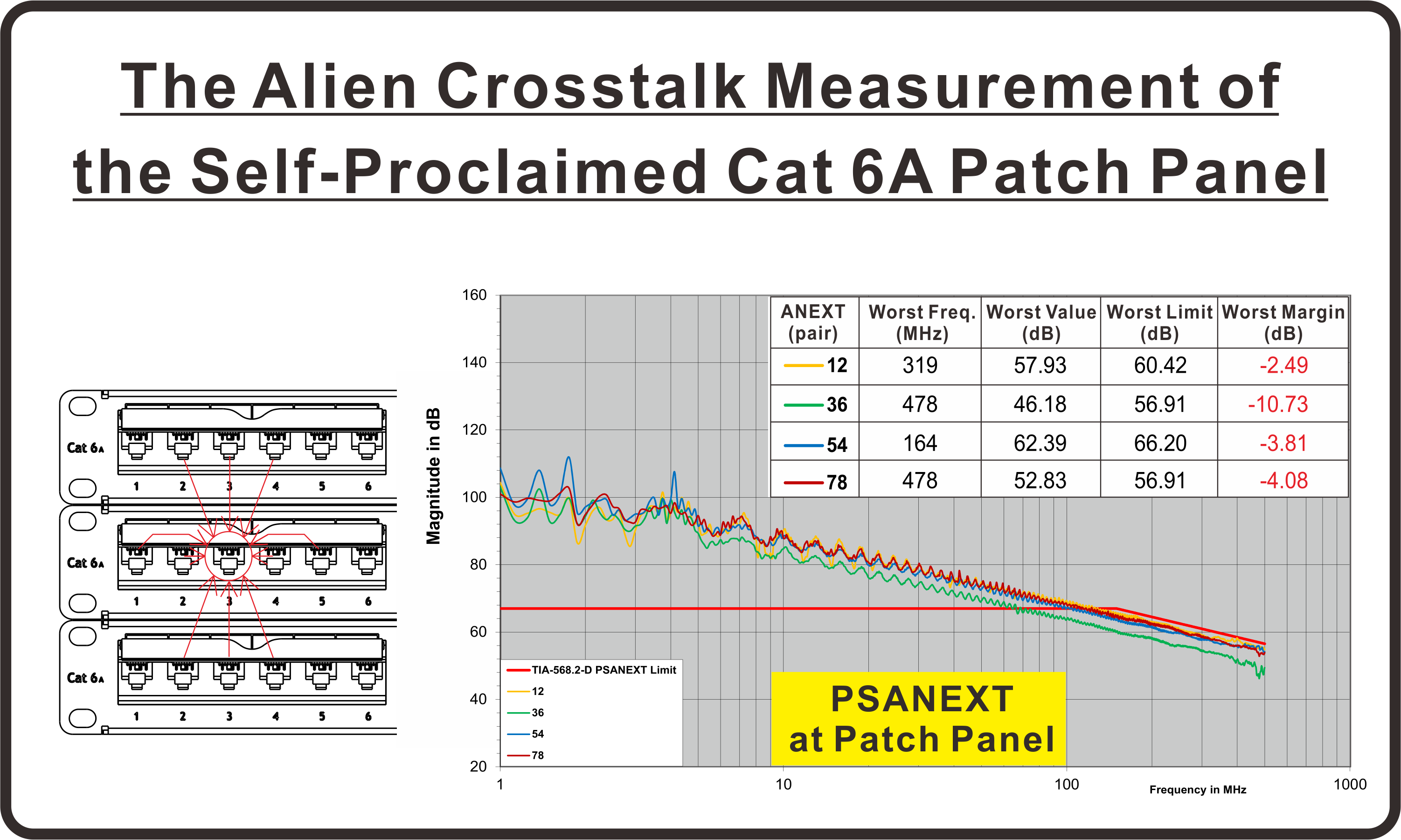
With Component-Rated limit in mind, the standard suggests any ANEXT measurement at all frequency that is less than 90-20*log(freq./100) is considered as significant alien crosstalk and shall be included in the entire Power-Sum Alien Near End Crosstalk (PSANEXT) result.
With many researches and studies, HCI successfully came up with mechanisms on Keystone Jack and Patch Panel that manages the suppression of Alien Crosstalk. These Component-Rated connectivity was granted United States utility patents on multiple designs that can effectively retain the impedance-matching and mitigate external crosstalk coupled from proximity ports and common mode noises reflected/transitted. The following are the actual measurements of Power-Sum Alien Near End Crosstalk (PSANEXT) for HCI Cat 6A patch panel:
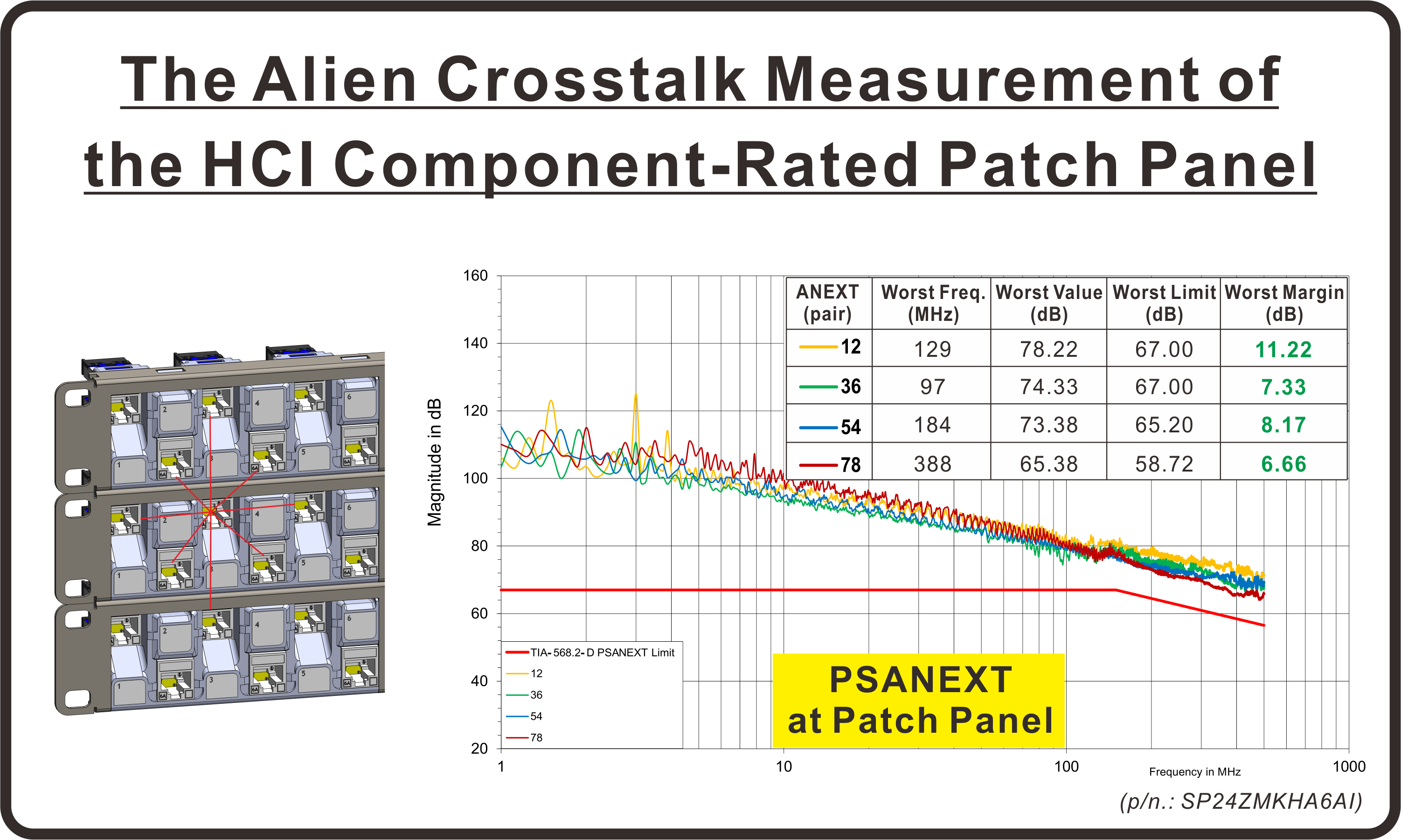
A valuable guideline to follow is that Unshielded Cat 6A is an excellent option and perfectly viable as long as it meets the Component-Rated requirements. Please bear this in mind: Cat 6A Component-Rated requires adherence to the standards for both Internal Crosstalk and Alien Crosstalk. This fact should always be remembered when evaluating Cat 6A options. Passing only either one of them will not give you a 10 Gigabit Ethernet.
We just want you to know
Unshielded System still takes 85% shares in the North American market.
Can’t deny that Screened System still works a lot better than Unshielded System since the screen effectiveness and shield integrity that works on EMI can also work effectively on disturbing signals generated from neighboring ports. Nevertheless, as previously explained, Unshielded System still has its advantages on the entire cost structure. Besides, with frequency up to 500MHz, Alien Crosstalk can still be alleviated by delicate mechanical designs and with inspiring means of rearranging geometry.
Integrating the key benefits of Cat 6A Unshielded Component-Rated connectivity, we have:
1.) Cheaper costs in the entire cabling.
2.) No complicated grounding procedures required. This saves a lot of labor costs, too.
3.) As long as Component-Rated is used, Alien Crosstalk performance is guaranteed by design.
Download the brochure ↓↓


